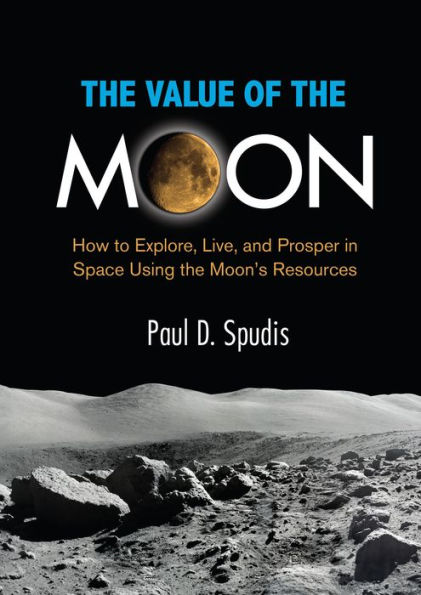While the Moon was once thought to hold the key to space exploration, in recent decades, the U.S. has largely turned its sights toward Mars and other celestial bodies instead. In The Value of the Moon, lunar scientist Paul Spudis argues that the U.S. can and should return to the moon in order to remain a world leader in space utilization and development and a participant in and beneficiary of a new lunar economy.
Spudis explores three reasons for returning to the Moon: it is close, it is interesting, and it is useful. The proximity of the Moon not only allows for frequent launches, but also control of any machinery we place there. It is interesting because recorded deep on its surface and in its craters is the preserved history of the moon, the sun, and indeed the entire galaxy. And finally, the moon is useful because it is rich with materials and energy. The moon, Spudis argues, is a logical base for further space exploration and even a possible future home for us all. Throughout his work, Spudis incorporates details about man's fascination with the moon and its place in our shared history. He also explores its religious, cultural, and scientific resonance and assesses its role in the future of spaceflight and our national security and prosperity.
1122455823
Spudis explores three reasons for returning to the Moon: it is close, it is interesting, and it is useful. The proximity of the Moon not only allows for frequent launches, but also control of any machinery we place there. It is interesting because recorded deep on its surface and in its craters is the preserved history of the moon, the sun, and indeed the entire galaxy. And finally, the moon is useful because it is rich with materials and energy. The moon, Spudis argues, is a logical base for further space exploration and even a possible future home for us all. Throughout his work, Spudis incorporates details about man's fascination with the moon and its place in our shared history. He also explores its religious, cultural, and scientific resonance and assesses its role in the future of spaceflight and our national security and prosperity.
The Value of the Moon: How to Explore, Live, and Prosper in Space Using the Moon's Resources
While the Moon was once thought to hold the key to space exploration, in recent decades, the U.S. has largely turned its sights toward Mars and other celestial bodies instead. In The Value of the Moon, lunar scientist Paul Spudis argues that the U.S. can and should return to the moon in order to remain a world leader in space utilization and development and a participant in and beneficiary of a new lunar economy.
Spudis explores three reasons for returning to the Moon: it is close, it is interesting, and it is useful. The proximity of the Moon not only allows for frequent launches, but also control of any machinery we place there. It is interesting because recorded deep on its surface and in its craters is the preserved history of the moon, the sun, and indeed the entire galaxy. And finally, the moon is useful because it is rich with materials and energy. The moon, Spudis argues, is a logical base for further space exploration and even a possible future home for us all. Throughout his work, Spudis incorporates details about man's fascination with the moon and its place in our shared history. He also explores its religious, cultural, and scientific resonance and assesses its role in the future of spaceflight and our national security and prosperity.
Spudis explores three reasons for returning to the Moon: it is close, it is interesting, and it is useful. The proximity of the Moon not only allows for frequent launches, but also control of any machinery we place there. It is interesting because recorded deep on its surface and in its craters is the preserved history of the moon, the sun, and indeed the entire galaxy. And finally, the moon is useful because it is rich with materials and energy. The moon, Spudis argues, is a logical base for further space exploration and even a possible future home for us all. Throughout his work, Spudis incorporates details about man's fascination with the moon and its place in our shared history. He also explores its religious, cultural, and scientific resonance and assesses its role in the future of spaceflight and our national security and prosperity.
16.99
In Stock
5
1

The Value of the Moon: How to Explore, Live, and Prosper in Space Using the Moon's Resources
272
The Value of the Moon: How to Explore, Live, and Prosper in Space Using the Moon's Resources
272eBook (Digital original)
$16.99
Related collections and offers
16.99
In Stock

Product Details
| ISBN-13: | 9781588345042 |
|---|---|
| Publisher: | Smithsonian Institution Press |
| Publication date: | 04/26/2016 |
| Sold by: | Penguin Random House Publisher Services |
| Format: | eBook |
| Pages: | 272 |
| File size: | 11 MB |
| Note: | This product may take a few minutes to download. |
About the Author

From the B&N Reads Blog
